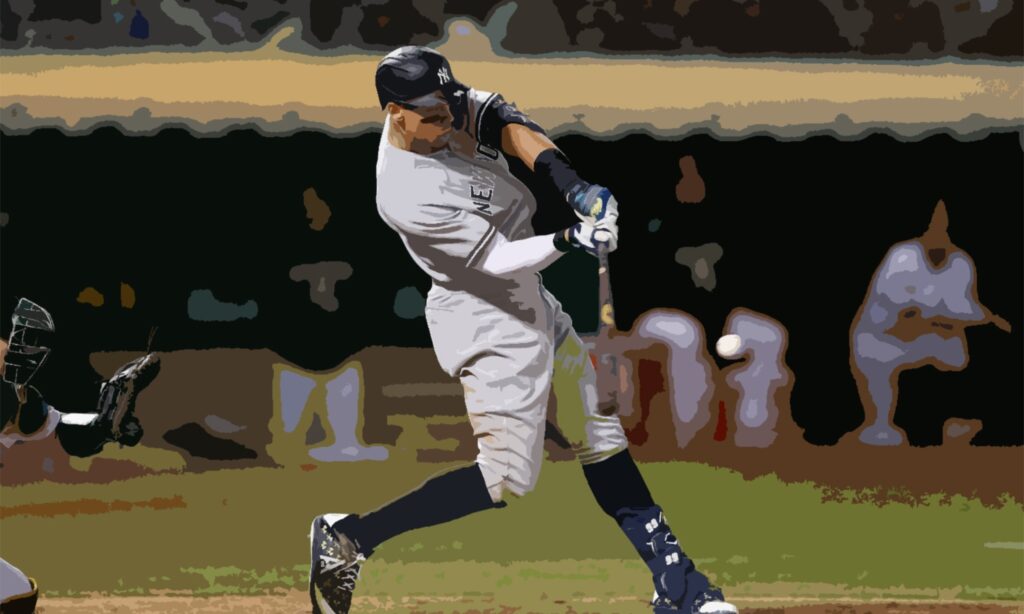For every sport, there are certain player stats that most avid fans set their sights on.
In hockey, those include goals, assists and points. Personally, I was always interested to see which players could breach 50 goals or 100 points on the NHL season.
In basketball, the key stat is the points per game average (PPG). Any player that manages over 30 PPG on the NBA season is part of an elite group.
Should a player keep putting up similar numbers over the duration of their career, they’d be a shoo-in for the NBA hall of fame.
As for Major League Baseball, the three stats that draw one’s attention are HRs, AVG and RBIs.
For those that don’t know, HR stands for homeruns, while AVG represents the batting average.
Fans get excited when players reach 30+ homeruns or have a batting average of over .300 on the season.
If just one player manages both these stats, you’re looking at an MVP candidate for the year.
And typically, their RBI numbers would skyrocket as well.
What is an RBI in Baseball?
RBI is an acronym for “runs batted in” in baseball. The batter is credited with an RBI for each player that safely crosses home plate during their presence at-bat. This includes any on-base hit, infield out, sacrifice bunt, sacrifice fly, fielder’s choice, bases loaded walk, hit-by-pitch, or interference.
Note that there are a few exceptions to the rules.
For example, an RBI is negated if the base runner scores on an error or ground into double play during the game.
Furthermore, a run scored on a wild pitch or due to the pitcher balking will not be credited to the batter.
Difference between RBIs and Runs
As described above, an RBI is credited to the batter for scoring in a run.
Meanwhile, the actual baserunner who safely crosses home plate is awarded a run.
As you might have figured, there is a separate stat column for Runs denoted by the letter R.
And if you were wondering, the batter is credited with an RBI when they hit a homerun.
Some people assume that the batter becomes a baserunner just after hitting the homerun. However, the play started by batting himself for the run.
So, in the end, it’s a “nay” on the run and “yay” for the RBI.
What is a good RBI count in baseball?
While every MLB season is different, players who register 100+ RBIs is part of an exclusive club.
Since the start of the millennium, the range has been anywhere from 10-50 players exceeding the 100-RBI mark.
In fact, in 2000, that number shot up to 53 players.
To date, the record for most RBIs in a season is held by Hack Wilson of the 1930 Chicago Cubs. That year, Hack reached an unimaginable 191 RBIs.
That benchmark is nearing its 100-year anniversary. I don’t think it will be broken anytime soon.
For comparison, the only two modern era players to come close were Manny Ramirez and Sammy Sosa.
Ramirez hit 165 RBIs in 1999, while Sosa could “only” muster 160 two years later.
While these numbers are solid, there are still a few hall-of-famers ahead of them.
Top 15 RBI Single Season Record
| Player Name | Year | Team | RBI | |
|---|---|---|---|---|
| 1 | Hack Wilson | 1930 | CHC | 191 |
| 2 | Lou Gehrig | 1931 | NYY | 184 |
| 3 | Hank Greenberg | 1937 | DET | 183 |
| 4 | Jimmie Foxx | 1938 | BOS | 175 |
| 5 | Lou Gehrig | 1927 | NYY | 175 |
| 6 | Lou Gehrig | 1930 | NYY | 174 |
| 7 | Babe Ruth | 1921 | NYY | 171 |
| 8 | Hank Greenberg | 1935 | DET | 170 |
| 9 | Chuck Klein | 1930 | PHI | 170 |
| 10 | Jimmie Foxx | 1932 | PHA | 169 |
| 11 | Joe DiMaggio | 1937 | NYY | 167 |
| 12 | Sam Thompson | 1887 | DET | 166 |
| 13 | Manny Ramirez | 1999 | CLE | 165 |
| 14 | Al Simmons | 1930 | PHA | 165 |
| 15 | Sam Thompson | 1895 | PHI | 165 |
| Tied | Lou Gehrig | 1934 | NYY | 165 |
RBI to Homerun Correlation
When running through the yearly MLB stats, I noticed a trend when it came to RBI leaders.
The players who led the league in RBIs, all had double digit home runs.
This piqued my curiosity. Has any player managed to earn 100+ RBIs, while hitting less than 10 homers in a season?
To my surprise, I discovered that only 25 players managed this feat.
Furthermore, only 7 of these players batted less than 0.300 AVG and only 2 just below 0.290.
That goes to show you need to hit often and well to make up for the lack of power.
But your chances remain quite slim.
The last player to do so was Paul Monitor of the Minnesota Twins, way back in 1996.
So, I decided to dig a little deeper.
I searched the percentage of players that achieved over 100 RBIs for every homerun milestone: 30, 35, 40, 50, 60 and 70.
I included the overall batting average to paint the bigger picture.
Here’s what I came up with.
RBI-HR Correlation Table
| PLAYER COUNT | % OF PLAYERS | BATTING AVERAGE | ||||
|---|---|---|---|---|---|---|
| Home Runs | Total | RBI 100+ | RBI 100+ | RBI < 100 | RBI 100+ | RBI < 100 |
| 70+ | 2 | 2 | 100.00 | 0.0 | 0.314 | - |
| 60-69 | 7 | 7 | 100.00 | 0.0 | 0.305 | - |
| 50-59 | 38 | 38 | 100.00 | 0.0 | 0.309 | - |
| 40-49 | 310 | 280 | 90.3 | 9.7 | 0.301 | 0.271 |
| 35-39 | 392 | 291 | 74.2 | 25.8 | 0.297 | 0.271 |
| 30-34 | 728 | 367 | 50.4 | 49.6 | 0.294 | 0.272 |
The table shows that a high RBI count is greatly related to a high HR count and good batting AVG (source).
As the homerun count diminishes, the player must rely on more on their batting average to pick up the slack. That is, a higher batting average will improve the player’s RBI totals as well.
These players made it up by hitting singles, doubles and triples too, especially with runners on base.
As a note, only 50% of players earned over 100 RBIs in the 30-34 HR range.
Final Thoughts
There is no doubt that RBIs contribute to a player’s success.
While the correlation is high between home runs and runs batted-in, teams cannot rely solely on their power hitters.
Some of the work must come from the runner themselves. Speed and player IQ will increase their scoring chances.
The batters can use various tactics to activate the runner’s qualities.
If the batter lacks power, a carefully hit single or double can do the trick.
When you’re facing off against a dangerous pitcher, maybe the best approach is the sacrifice bunt.
When the baserunner is on third base, the sacrifice fly should safely bring them home as well.
There is nothing worse than leaving a runner stranded in scoring position (2nd or 3rd base) to end the inning.
Keep in mind that teams assign both first and third base coaches specifically for baserunners.
It’s up to the batter to get all the offensive gears in motion.
The RBI is the end result.






